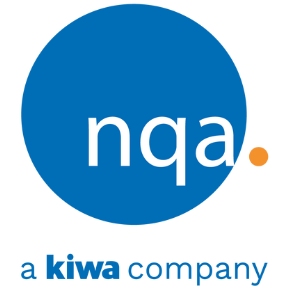Virtual vs. face-to-face training: the perks and pitfalls
3-minute read
ISO training is one of the best ways to boost your skills and keep your finger on the pulse – no matter the industry. The question is: virtual or face-to-face?
ISO training is one of the best ways to boost your skills and keep your finger on the pulse – no matter the industry. The question is: virtual or face-to-face?
When Covid-19 hit, the world went online – and NQA training was no exception.
The team swiftly moved from in-person training in the UK to a virtual format, making sure as many delegates could still participate.
NQA’s ability to adapt and keep people safe has proven to be a great success, with delegates from around the world enrolling on virtual ISO training.
 In this blog, NQA’s Training Manager Sam Roberts explores virtual vs. face-to-face training.
In this blog, NQA’s Training Manager Sam Roberts explores virtual vs. face-to-face training.
.png)
So, how is NQA’s ISO training adapting to this?
While Covid-19 is no longer viewed as a global issue, the virus still exists. Some risks remain, with certain groups of people impacted more than others.
For this reason, NQA plans to deliver both virtual and face-to-face ISO training for the foreseeable – including: Each training delivery method has pros and cons – keep reading to learn more.
Each training delivery method has pros and cons – keep reading to learn more.
.png)
Quieter delegates may also get lost in the noise, which is one of the reasons NQA sets a sign-up limit per training.
 Now you know the perks and pitfalls of virtual training, let’s move on to face-to-face training.
Now you know the perks and pitfalls of virtual training, let’s move on to face-to-face training.
.png)
The travel element also contributes to face-to-face training being less environmentally friendly. It may not be a concern to all organisations but must be acknowledged by those pursuing carbon neutrality.
 Taking both virtual and face-to-face ISO training into account, which do you prefer?
Taking both virtual and face-to-face ISO training into account, which do you prefer?
.png)
If you’re interested in NQA training, please get in touch. Our friendly team is always happy to walk you through the various options and propose the best delivery method!


The team swiftly moved from in-person training in the UK to a virtual format, making sure as many delegates could still participate.
NQA’s ability to adapt and keep people safe has proven to be a great success, with delegates from around the world enrolling on virtual ISO training.
.png)
NQA training in the current day
Fast-forward from 2020 to the present, and the World Health Organisation has declared the global health emergency over.So, how is NQA’s ISO training adapting to this?
While Covid-19 is no longer viewed as a global issue, the virus still exists. Some risks remain, with certain groups of people impacted more than others.
For this reason, NQA plans to deliver both virtual and face-to-face ISO training for the foreseeable – including:
-
Virtual @ anywhere globally - live NQA courses open to everyone
-
In-house @ client location - live NQA courses for a specific client
-
Bespoke @ virtual or client location - live and tailored NQA courses for a specific client
.png)
Option #1: virtual ISO training
NQA’s virtual ISO training (taking place during UK hours) brings the following benefits:-
Delegates attend from anywhere, reducing the time and money spent on travel
-
Involves global delegates, leading to diverse conversations and perspectives
-
Delegates feel more relaxed from being in a known, comfortable environment
- Reduced carbon footprint, as delegates don't travel (i.e. more sustainable)
-
No need for stressful, time-consuming travel and accommodation logistics
Quieter delegates may also get lost in the noise, which is one of the reasons NQA sets a sign-up limit per training.
.png)
Option #2: face-to-face ISO training
Like virtual training, face-to-face ISO training has a range of benefits:-
Delegates have quality, in-person access to the tutor
-
Interactions and collaboration take place in real-time
- Issues and misunderstandings can be highlighted easily
-
Delegates are in a new environment and so can focus on training
- External distractions (such as incoming emails) are kept to a minimum
The travel element also contributes to face-to-face training being less environmentally friendly. It may not be a concern to all organisations but must be acknowledged by those pursuing carbon neutrality.
.png)
Final thoughts from NQA
When it comes to ISO training delivery methods, there is no right or wrong. It simply depends on what you prefer – and for bespoke client training, the culture of the organisation.If you’re interested in NQA training, please get in touch. Our friendly team is always happy to walk you through the various options and propose the best delivery method!


